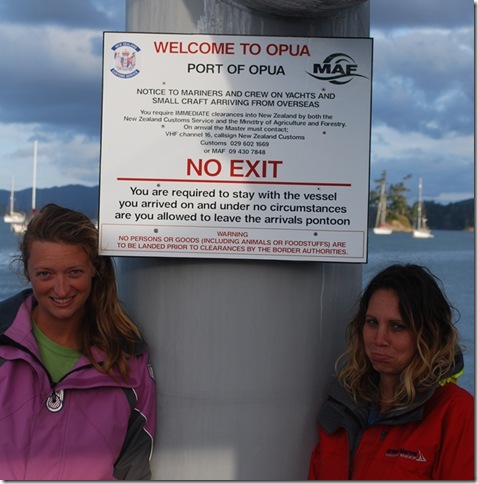Well, we finally made it, but not until we got knocked around one more time. We did get winds that let us sail the rhumb line into the Bay of Islands, but as forecasted, they became fairly strong between midnight and dawn yesterday. With an overcast sky and no moon, the large seas forward of the beam and gusts to 35 knots or so made for a long night. We spent the worst of it sailing under only a partially reefed jib. Because air is so light, the winds aren’t much to worry about, but slamming into large waves, with their high density and their approaching velocity combined with ours makes for some pretty jarring collisions. The boat’s kinetic energy goes like the square of the velocity, so increasing our speed by a factor of two quadruples the energy we have when we slam into a wave. Although we were trying to make it in by Monday and take advantage of the brief wind change, we eventually slowed down to try to minimize the pounding, though not as much as we would have under "normal" circumstances.
This morning, the effect of pushing the boat harder than usual into the seas was readily apparent. The mounting points for the inboard side of the starboard trampoline were all ripped out and the metal strip that covered them is still hanging from the bow. We were occasionally on water from the tops of breaking waves that slapped against the starboard hull, and some water got sprayed into the starboard engine room (primarily through the air vents intended to provide air for the engine, I think) and onto some unprotected electronics. Luckily, our autopilot computer wasn’t effected, but the sensor for the battery monitor suffered come corrosion damage so our battery monitor isn’t working. The bilge pump in the port engine room quit a few days ago and this morning we had our second round of manually pumping it out using a hand pump to fill a small bucket. It seemed easier than messing with a new bilge pump installation out there and the manual bilge pumps that are installed don’t have hoses that reach to the bottom of the engine bilges (that would be a nice change to make here in NZ). Other than that, an alternator belt on the port engine, a strange loss of power in the port engine, and some new creaking sounds, we’ve made it through OK. The bows are looking a bit low in the water, though so we may have taken on some water forward that still needs to be pumped out.
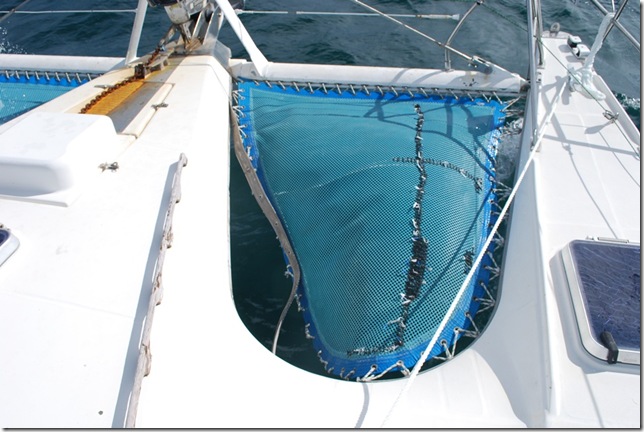 Busted tramp. Sleeping a few feet away was not easy.
Busted tramp. Sleeping a few feet away was not easy.
After dealing with the engine rooms, it looked like the wind had changed enough that we could no longer sail the rhumb line. With the seas still too large to motor into it looked like another night of sailing into waves before reaching land, but after we raised the main with a single reef in it we were able to hold the rhumb line with no problems. We also saw another mola mola while we were raising the main. This time, it was close enough to the surface that one of its fins was actually out of the water as it swam, making a motion sort of like a skulling oar. They are pretty amazing creatures to see randomly when you look over the side, and it was again while we were stopped or making slow progress. In addition to being on course we were also making really good speed and the pounding was minimal. For the first time in days, we were actually sailing directly toward our destination, with a reasonable motion, and making good time. The night before we had been able to pick up some AM and FM radio stations from NZ while we were still almost 100 miles offshore. We were around 40 miles offshore when we raised the main and by 30 miles the seas were noticeably smaller. Even though the wind was down a little, it really seems like it was due to the reduced fetch (open sea miles for the wind to build up the waves) due to being near land. It was a pretty cloudy day, so we were only 17 miles from the mouth of the bay when we could definitely say that we say land — a large mountain marking the northern mouth of the Bay of Islands. At 12 miles, we were formally in NZ waters raised the yellow Q flag (the international sign that you’ve just entered a country and need to clear customs), and at 8 miles we were socked in by light rain and could see a single bit of land.
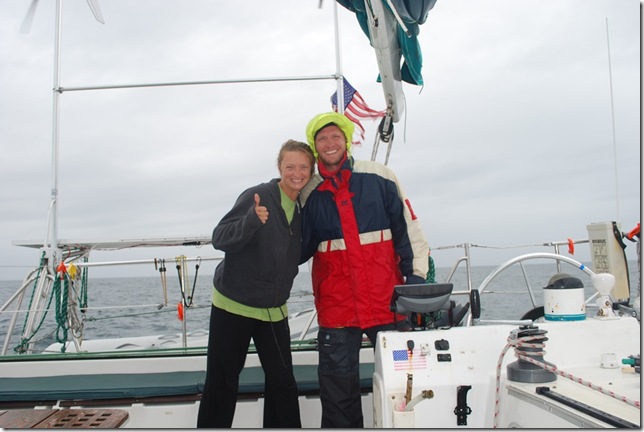 Happy to finally be headed in…
Happy to finally be headed in…
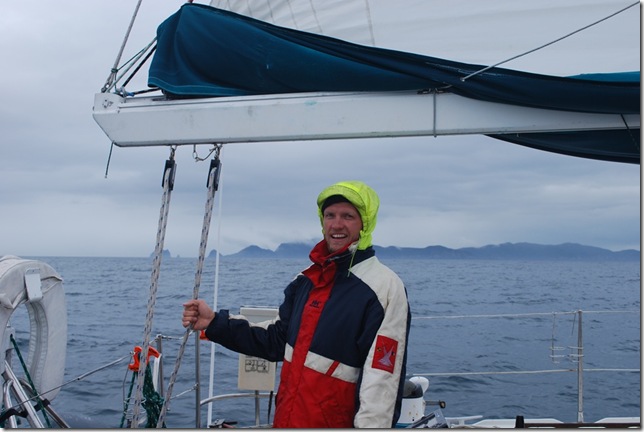 View of the south end of the mouth of the Bay of Islands
View of the south end of the mouth of the Bay of Islands
Fortunately, the rain cleared and we actually had a little bit of sunlight as we sailed through the bay and then south to the quarantine dock at the Opua Marina. After such a long, rough passage, we were all looking forward to a hot shower and restaurant meal, but it wasn’t to be. New Zealand has pretty strict clearance rules and processes, and since most boats check in at Opua, it’s a tight operation — quite a change from the island nations we’ve become accustomed to. There’s a special floating dock here for boats to tie up at while they wait to clear in. It’s the only dock I’ve ever seen that’s not connected to land. Since we came in after hours, we have to wait until morning to clear in and we’re strictly prohibited from going ashore until then. There was a group of boaters enjoying drinks on a balcony at the cruising club by the quarantine dock that yelled a hello to us as we came in. Unfortunately, all we could do was wave and watch them, the restaurant nearby, and the boaters grilling on the shore-side docks just across from us.
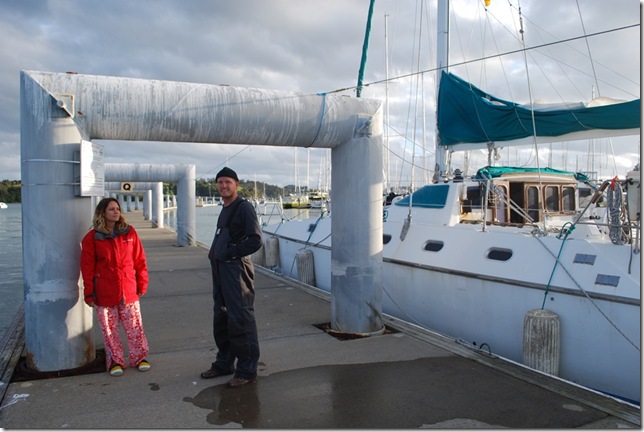 Pura Vida alone at the quarantine dock
Pura Vida alone at the quarantine dock
Oh well. All told, we ended up making the dreaded passage to NZ without encountering any really bad weather — uncomfortable, but not dangerous. Although the weather and flora are completely different than the tropical locales we’ve been enjoying the last few months (no coconut palms anywhere), this is a very beautiful place. For all of our friends and family who’ve been patiently waiting for us to reach someplace where we can Skype reliably, we’ll try to call in the next day or two. First, we’re going to enjoy a good night’s sleep with no getting up to stand watch on a freezing, windy night and no pounding into waves to jar us awake.


